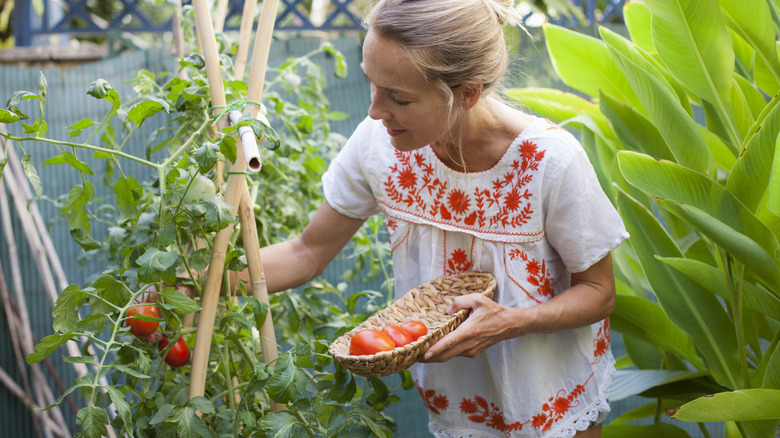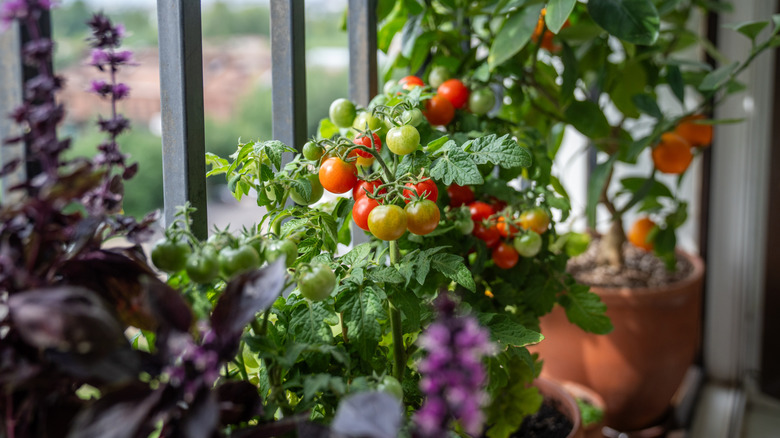The Fastest And Easiest Way To Hand-Pollinate A Large Quantity Of Tomatoes
Put down the paintbrush and step away from the cotton swab, because everything you thought you knew about hand-pollinating tomatoes is about to change. If you need to pollinate dozens and dozens of tomato plants and don't have time for such delicate nonsense, the tomato tickle method has been adapted to involve a leaf blower. It might sound extreme, and maybe a little aggressive, to start blasting your tomato plants, but it actually mimics a very important part of bee pollination. When some bee species land on tomato flowers, their buzzing creates a very specific frequency that other insects just can't reproduce.
Unlike other fruiting plants like cucumbers or squash, tomatoes have "perfect" flowers, which means they contain both male and female parts. The key to pollinating a tomato isn't moving pollen from the male part to the female part; it's getting the pollen to come out of the anthers, which usually needs a bit of physical agitation. Some gardeners have realised that the controlled airflow from leaf blowers does a great job at replicating these bee vibrations, releasing the pollen which can then fall on the sticky female parts. That's why attracting bees is so important when growing tomatoes. While there are many advantages to growing plants in a greenhouse, tomato plants will often struggle in environments without bees.
Making the leaf blower method work for maximum results
Getting this technique to work for you will take a little thought and effort, especially if you want to guarantee results. Start by setting your leaf blower to its lowest possible setting; otherwise, you risk hurting your tomato plants more than helping them. If you have a lot of plants, walk slowly in front of each one with the leaf blower, giving them each a little attention. It's especially helpful to do this between 10 a.m. and 4 p.m. when pollen is most viable. You'll want to avoid early morning if it's dewy or a really rainy day, as wet pollen won't transfer as easily.
You can also boost natural pollination by planting your tomatoes alongside companion plants like borage, a pollinator-magnet herb that tomatoes love to be planted next to. That way, you've got nature's little backup system for any tomato plants you missed on your leaf-blowing expedition. Some alternative methods may be better if you have a smaller crop. An electric toothbrush being held against the flowers for a couple of seconds or tapping the flowers with your finger can work to get the pollen moving. The key is consistency and commitment — once those flowers are out, you want to give them daily attention and treatment to ensure you get the most fruit as possible.

